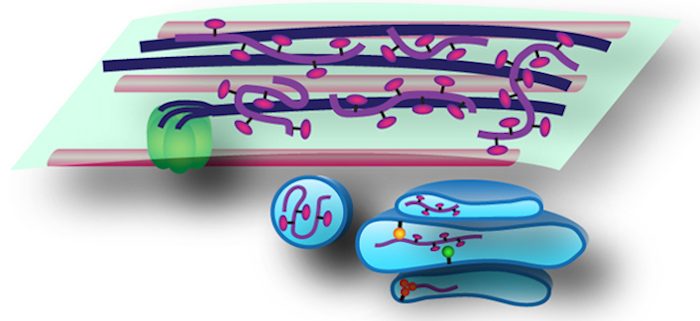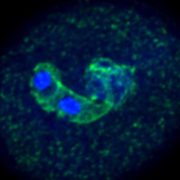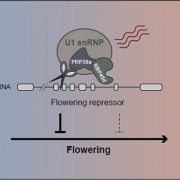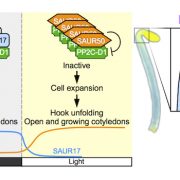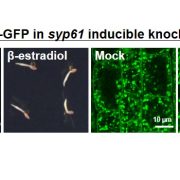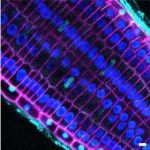Sometimes “jammed paper” can be a good thing: functional interactions between pectins and cellulose in the plant cell wall
Du et al. explore how pectins interact with cellulose in the plant cell wall.
Plant Cell https://doi.org/10.1105/tpc.20.00252
By Juan Du1 and Charles T. Anderson2,3
1Key Laboratory of Bio-Resource and Eco-Environment of Ministry of Education, College of Life Sciences, Sichuan University, Chengdu 610064, P. R. China
2Center for Lignocellulose Structure and Formation, The Pennsylvania State University, University Park, PA 16802, USA
3Department of Biology, The Pennsylvania State University, University Park, PA 16802, USA
Background: Plant cells are surrounded by cell walls that are composed mainly of sugar-based polysaccharides. During plant growth, cell walls provide both strength and flexibility. The levels, configurations, interactions, and modifications of different polysaccharides determine the structure and physiology of plant cell walls. One abundant class of polysaccharides in the walls of growing cells is pectins. Pectins are synthesized inside the cell and secreted to the cell wall. Another important cell wall component is cellulose, which has a tensile strength similar to steel and is thought to be the major “load-bearing” component of the wall. Some evidence suggests that pectins interact closely with cellulose in the plant cell wall, but how these interactions influence cell wall assembly and structural integrity has remained obscure.
Question: We wanted to learn more about how pectins interact with cellulose in the wall. When pectin synthesis is deficient, what are the effects on cellulose synthesis, cell wall assembly, and plant growth?
Findings: We determined the molecular function of a key protein in cell wall biosynthesis, QUASIMODO2, verifying its long-hypothesized function as a pectin methyltransferase. Reduction of pectin content in two mutants lacking QUASIMODO2 indicated that this protein is required by normal pectin synthesis. Both mutants showed deficient growth and cell–cell adhesion, and also showed defects in the synthesis and accumulation of cellulose, the nano-scale organization of the cell wall, and the organization and stability of microtubules. Additionally, NMR analyses revealed that the mobility of pectin and cellulose in the wall were enhanced in mutant plants, suggesting that the biophysical integrity of the plant cell wall depends on normal pectin synthesis.
Next steps: We want to further investigate the functions of QUASIMODO2 and related proteins in pectin biosynthesis, and how these proteins help build distinct pectin sub-domains. We will also further explore the signaling pathways that are activated by compromised cell wall integrity, and how these signaling pathways influence cell wall architecture and plant growth.
Juan Du, Alex Kirui, Shixin Huang, Lianglei Wang, William J. Barnes, Sarah N. Kiemle, Yunzhen Zheng, Yue Rui, Mei Ruan, Shiqian Qi, Seong H. Kim, Tuo Wang, Daniel J. Cosgrove, Charles T. Anderson, and Chaowen Xiao. (2020). Mutations in the Pectin Methyltransferase QUASIMODO2 Influence Cellulose Biosynthesis and Wall Integrity in Arabidopsis thaliana. Plant Cell; DOI: https://doi.org/10.1105/tpc.20.00252


